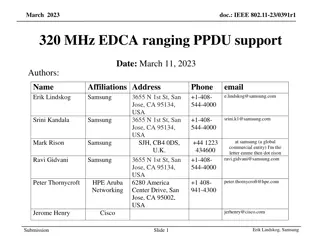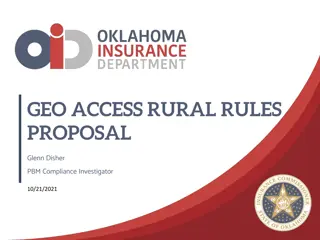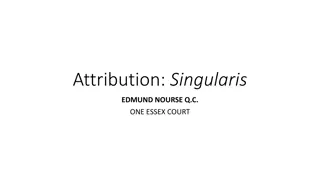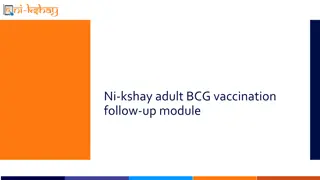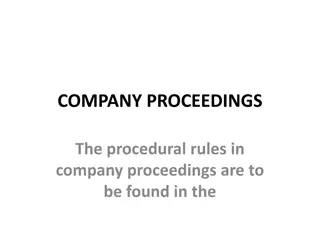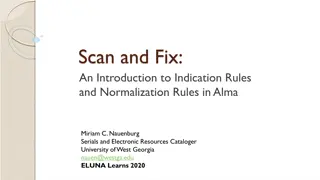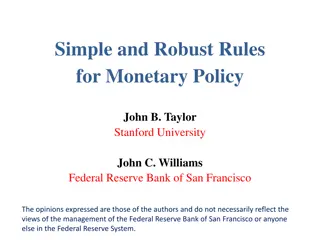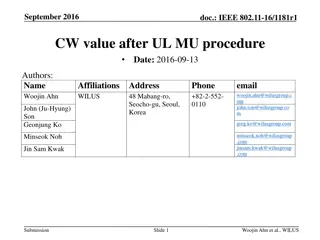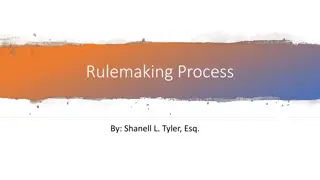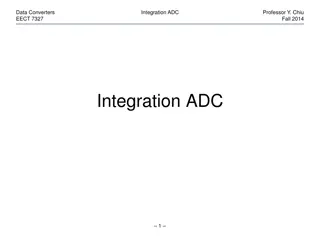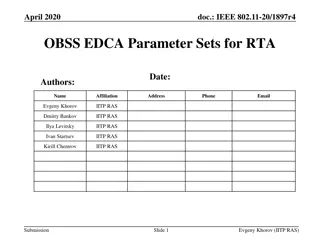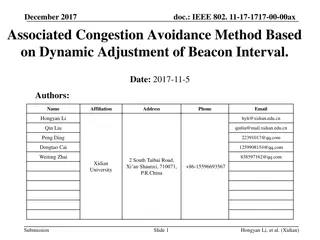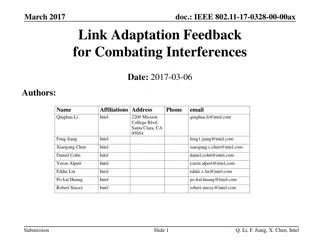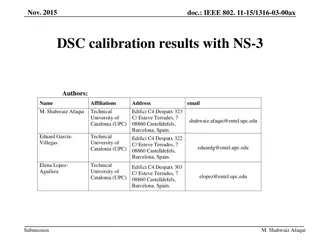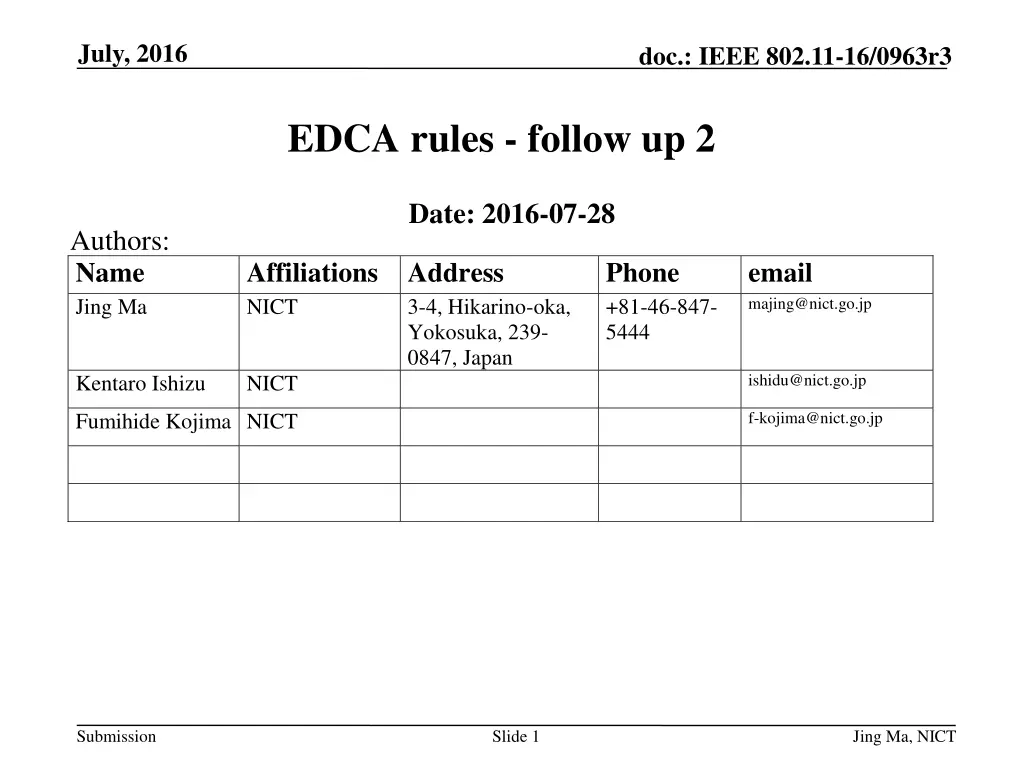
IEEE 802.11-16/0963r3 EDCA Rules Follow-Up July 2016
Delve into the July 2016 documentation discussing EDCA rules in the IEEE 802.11-16/0963r3 standard. The presentation addresses allowing APs to choose different EDCA parameters for channel access compared to associated STAs, proposing options for prioritizing channel access. Options include AP-selected EDCA parameters, broadcasting parameters to restrict STAs' access temporarily, or a combination of both.
Download Presentation

Please find below an Image/Link to download the presentation.
The content on the website is provided AS IS for your information and personal use only. It may not be sold, licensed, or shared on other websites without obtaining consent from the author. If you encounter any issues during the download, it is possible that the publisher has removed the file from their server.
You are allowed to download the files provided on this website for personal or commercial use, subject to the condition that they are used lawfully. All files are the property of their respective owners.
The content on the website is provided AS IS for your information and personal use only. It may not be sold, licensed, or shared on other websites without obtaining consent from the author.
E N D
Presentation Transcript
July, 2016 doc.: IEEE 802.11-16/0963r3 EDCA rules - follow up 2 Date: 2016-07-28 Authors: Name Jing Ma Affiliations Address NICT Phone +81-46-847- 5444 email majing@nict.go.jp 3-4, Hikarino-oka, Yokosuka, 239- 0847, Japan ishidu@nict.go.jp Kentaro Ishizu NICT f-kojima@nict.go.jp Fumihide Kojima NICT Submission Slide 1 Jing Ma, NICT
July, 2016 doc.: IEEE 802.11-16/0963r3 Introduction Based on the motion passed in May meeting, The following concept was present in the TGax SFD[1] Allow the AP to choose any access category for contending to send the trigger frame The chosen AC may give to the AP higher priority in accessing the channel compared to its associated STAs There were some further discussions about more details related to the above approved motion should be specified[2, 3] How to choose AC for a trigger frame How to use different set of EDCA parameter In this contribution, we would like to discuss about how to use different set of EDCA parameter. Submission Slide 2 Jing Ma, NICT
July, 2016 doc.: IEEE 802.11-16/0963r3 Proposal Basically, AP may follow baseline EDCA channel access mechanism which allows AP to use different EDCA parameters than its associated STAs [4]. How to use different set of EDCA parameters Option 1: AP is allowed to choose EDCA parameters to raise its priority to access channel. Option 2: AP broadcasts EDCA parameters to constrain associated STAs from accessing channel for a certain period. Option 3: both option 1 and option 2 Submission Slide 3 Jing Ma, NICT
July, 2016 doc.: IEEE 802.11-16/0963r3 Proposal (con t) Option 1: AP is allowed to choose EDCA parameters to raise its priority to access channel. Example ( TXOP limit = 0) (a) At first, AP may keep obtaining several TXOPs with higher priority than its associated STAs. Submission Slide 4 Jing Ma, NICT
July, 2016 doc.: IEEE 802.11-16/0963r3 Proposal (con t) Option 1: AP is allowed to choose EDCA parameters to raise its priority to access channel. Example ( TXOP limit = 0) (b) Then, associated STAs may obtain TXOP after several TXOPs as well, because they keep decrementing the resumed backoff timer. Submission Slide 5 Jing Ma, NICT
July, 2016 doc.: IEEE 802.11-16/0963r3 Proposal (con t) Option 2: AP broadcasts EDCA parameters to constrain associated STAs from accessing channel for a certain period. Example: Submission Slide 6 Jing Ma, NICT
July, 2016 doc.: IEEE 802.11-16/0963r3 Conclusion Basically, AP may follow baseline EDCA channel access mechanism which allows AP to use different EDCA parameters than its associated STAs. How to use different set of EDCA parameters Option 1: AP is allowed to choose EDCA parameters to raise its priority to access channel. Option 2: AP broadcasts EDCA parameters to constrain associated STAs from accessing channel for a certain period. Option 3: both option 1 and option 2 Submission Slide 7 Jing Ma, NICT
July, 2016 doc.: IEEE 802.11-16/0963r3 SP Which option do you prefer Option 1: AP is allowed to choose EDCA parameters to raise its priority to access channel. Option 2: AP broadcasts EDCA parameters to constrain associated STAs from accessing channel for a certain period. Option 3: both option 1 and option 2 Submission Slide 8 Jing Ma, NICT
July, 2016 doc.: IEEE 802.11-16/0963r3 References 1. 2. 3. 4. 11-15-0132-17-00ax-spec-framework, May 2016 11-16-0762-00-00ax-edca-rules-for-sending-trigger-frames, June 2016 11-16-0768-00-00ax-tgax-teleconference-minutes-from-june-to-july-2016 Draft P802.11REVmc_D6.0 Submission Slide 9 Jing Ma, NICT


